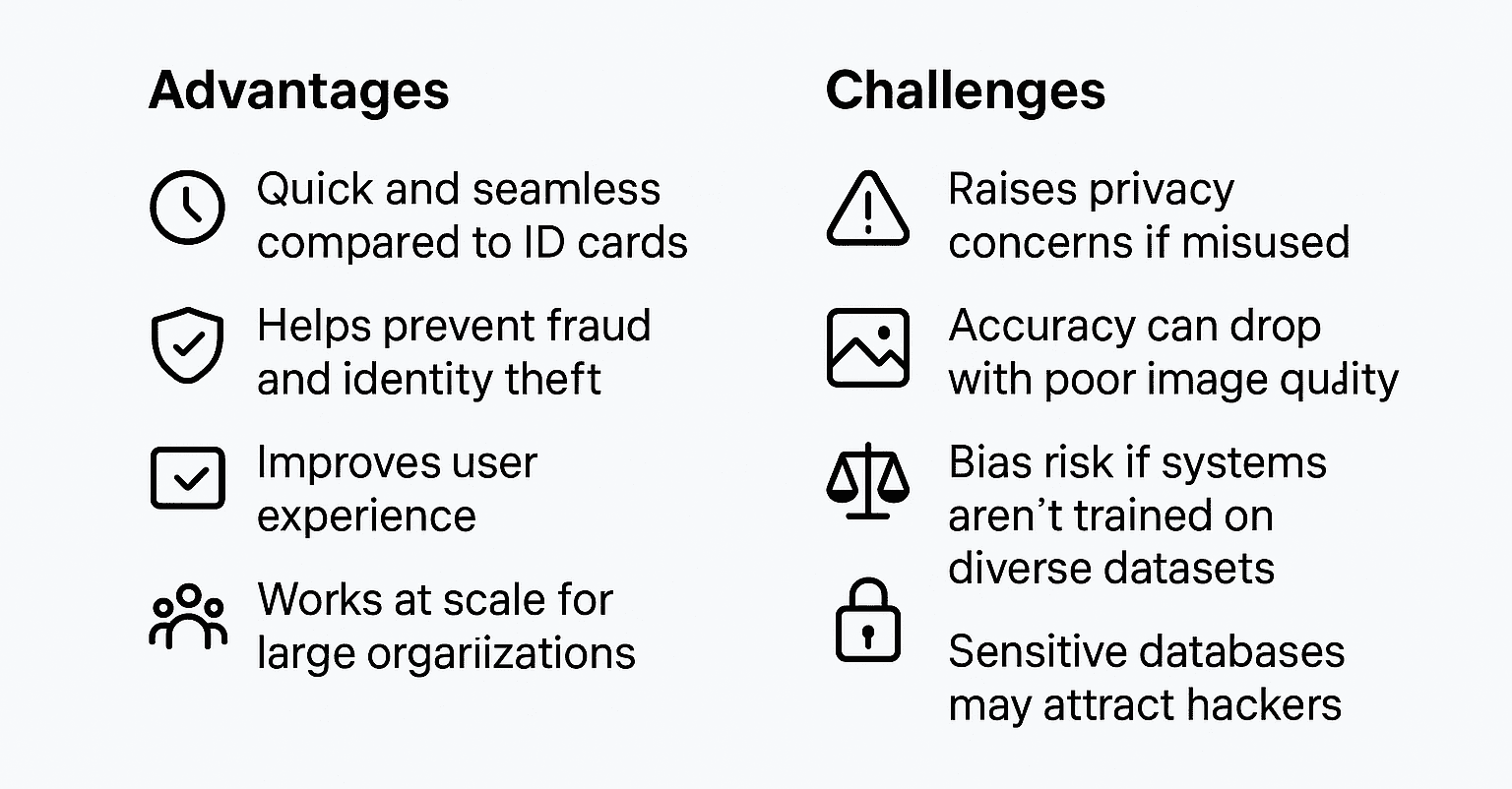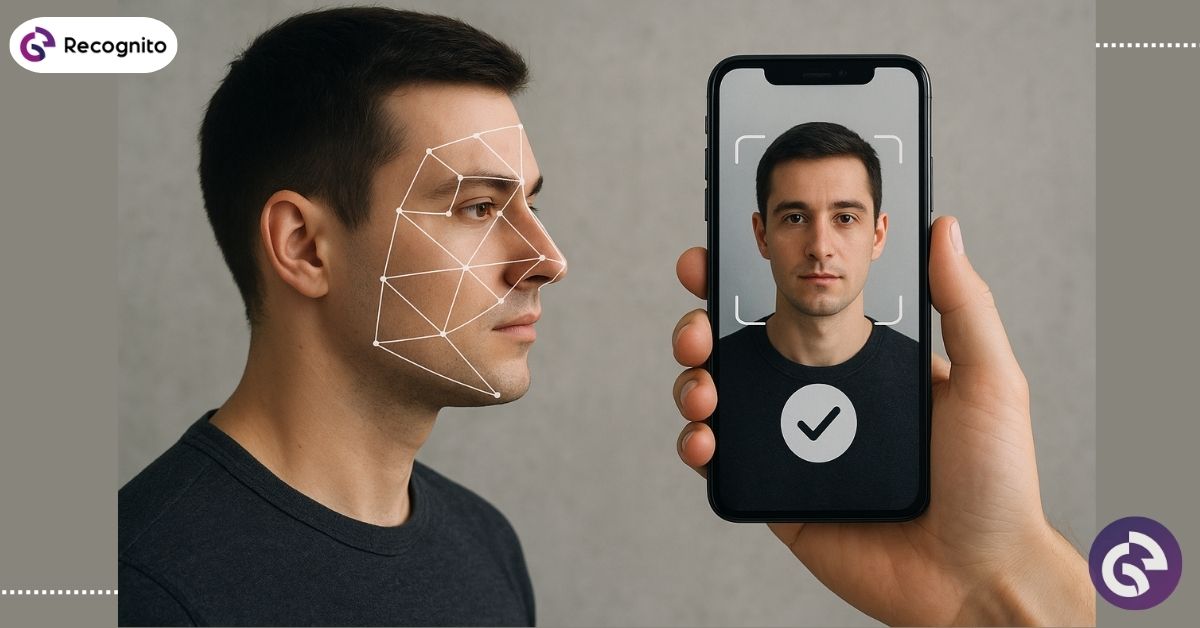Face identity search is a method that uses AI-powered facial matching instead of IDs or passwords. A system compares key features like eye spacing or cheek shape to a stored faceprint. It’s fast, contactless, and often more accurate than manual checks.
People use it in banks, airports, and healthcare settings. Structurally, it works like this:
- Captures a face image
- Extracts meaningful facial points
- Creates and compares a faceprint
- Outputs a match or no-match result
This technology offers quick and secure identity checks without needing physical tokens. You can even explore open-source projects like Recognito’s GitHub repository to see how developers are building practical tools with it.
Why Modern Systems Depend on AI-Driven Face Matching
Passwords and IDs can be lost or stolen. That’s why many systems now rely on biometric verification for better security, speed, and ease of use.
Benefits include:
- Fast identity checks for crowds or busy queues
- Higher accuracy than visual or document-based ID
- Hands-free operation—no scanning or swiping cards
- Scalable systems for millions of users
Studies show biometric tech is growing fast, with accuracy and adoption soaring across industries. Independent evaluations, such as the Face Recognition Vendor Test (FRVT), confirm which systems are the most reliable in real-world conditions.
How Independent Testing Sets the Gold Standard
Governments and businesses lean on NIST’s FRVT program to judge performance, fairness, and accuracy. This ongoing benchmark evaluates algorithms on speed, bias, and resilience to poor image quality. Full results are published openly, like in NIST’s FRVT 1:1 reports, which compare one-to-one verification across different vendors.
By using such public benchmarks, companies can pick technologies that are not only fast but also proven to be fair and secure.
Everyday Applications
This technology is no longer confined to research labs. It’s already part of daily life:
Security and Policing
Authorities use it to identify suspects in public areas. London’s police reported dozens of arrests in a single week of trial deployments.
Financial Services
Banks now let users unlock apps or approve payments by simply looking into the camera, improving both speed and trust.
Travel and Border Control
Airports in Singapore and the US speed up boarding by replacing paper tickets with biometric gates.
Healthcare
Hospitals deploy it to verify patient identities and reduce fraud in insurance systems.
Business and Retail
Companies use it for employee access, while retailers are testing it to create personalized shopping experiences.
Strengths and Weaknesses
Advantages
- Quick and seamless compared to ID cards
- Helps prevent fraud and identity theft
- Improves user experience
- Works at scale for large organizations
Challenges
- Raises privacy concerns if misused
- Accuracy can drop with poor image quality
- Bias risk if systems aren’t trained on diverse datasets
- Sensitive databases may attract hackers
The good news is that testing programs like FRVT are pushing the industry to improve. For example, error rates have fallen drastically as vendors adapt their algorithms to meet those standards.

The Future of Face Identity Search
Looking ahead, we’ll see this technology combining with other biometrics like voice and fingerprint for multi-factor security. Processing will also move to local devices using edge computing, making systems faster and less dependent on cloud storage.
Smart cities may integrate it for public safety, while businesses will use it to enhance customer experiences. As the technology matures, issues like bias and privacy will need strict regulation, but the potential is too strong to ignore.
Conclusion
Face identity search is reshaping how people prove who they are. From faster airport boarding to secure banking apps, it blends convenience with stronger protection. Independent testing programs, such as the FRVT run by NIST, ensure that the systems are fair, accurate, and ready for real-world use. The road ahead includes both challenges and opportunities, but its role in the future of digital identity is undeniable.
Recognito is helping lead the way in bringing this future closer
Frequently Asked Questions
What is face identity search?
Face identity search is a technology that scans and matches facial features with stored data to confirm identity. It’s widely used in banking, airports, and security systems.
How does face identity search work?
The system captures a face image, extracts unique points like eye distance or jawline, and creates a template. That template is compared with databases to confirm or deny a match.
Is face identity search safe?
It’s safe when managed properly. Trusted systems use encryption and comply with security standards, though privacy concerns exist if data is mishandled.
Where is face identity search used today?
You’ll find it in smartphone unlocks, airport boarding gates, online banking apps, and even healthcare systems that require quick patient verification.
What are the main advantages of face identity search?
It offers faster verification than ID cards, prevents fraud, improves user experience, and scales easily for large organizations.

